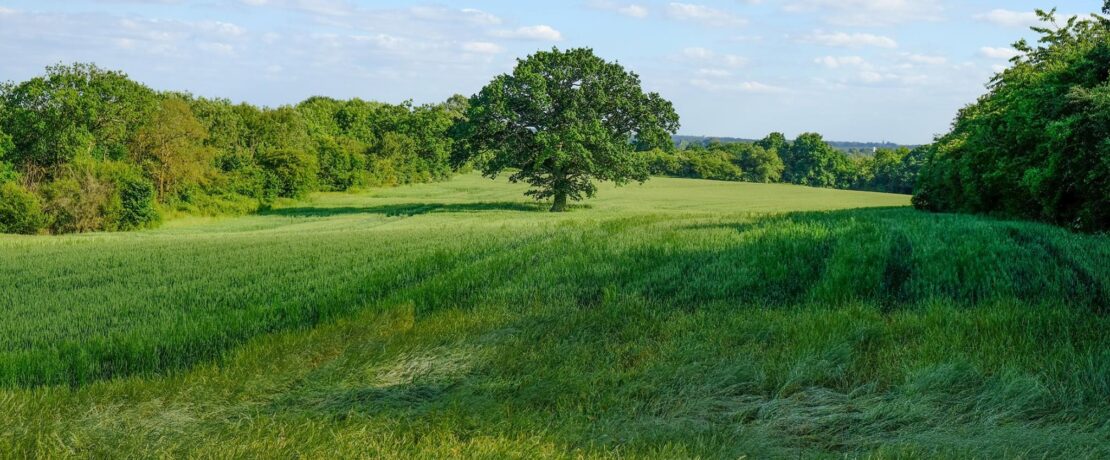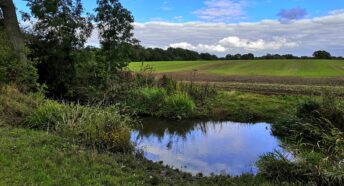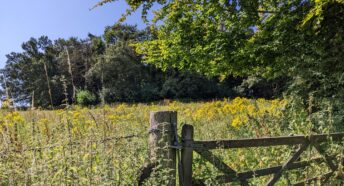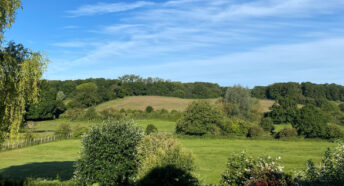State of the Green Belt 2023: A vision for the 21st Century
The Green Belt is crucial in solving climate, nature and food crises.
The Green Belt protects 12.5% of England’s land area – and about two-thirds of Hertfordshire’s land area – from development. But it is being overlooked as a pivotal solution to climate change, the decline of nature, and our food security vulnerability. And contrary to its fundamental purpose, it’s under increasing assault from large-scale development proposals.
Our new report looks at the state of the Green Belt all across England
In our report, we discuss how re-wiggled streams, expanded woodland and revived hedgerows can help the countryside around towns and cities soak up more water to protect urban areas from increased floods, droughts and other natural disasters. Domestic food security can be strengthened by keeping agricultural land in farming. And everyone’s health and well-being can be enhanced by ensuring access to the Green Belt – better footpaths and public transport links – so that people get the maximum benefit from green spaces.
Read ‘State of the Green Belt 2023’
Wrong homes, wrong places
Our report also finds that the wrong homes are being built in the wrong places for the wrong people. An acute need for more genuinely affordable and social housing means that communities in the Green Belt should be able to develop small rural exception sites to meet local needs.
But this isn’t what is happening. Our report shows that, from a sample of thirteen large schemes recently completed or currently underway on former Green Belt land, only five percent of the housing built was social housing. And consistently less affordable housing is being provided than what is called for in local planning policy.
Across England, our research found that:
- Every year since 2009 there were on average 220 planning applications for large developments in the Green Belt, and at least 9,000 dwellings built; and
- Most of these dwellings are larger, open-market housing – only 12.5% were affordable or for social rent.
One of the case studies is right here in East Hertfordshire, at the so-called ‘Gilston Garden Villages.’ The largest release of Green Belt in a Local Plan in England took place in October 2018 with the adoption of the East Herts Local Plan and the allocation of open countryside for 10,000 dwellings (covering approximately 1,000 hectares). Now, the ‘garden village’ principles originally proposed are not being followed, and the originally proposed 40% affordable housing has been reduced to 23% by the developer. We are supporting local groups in challenging these changes.
Overall, here in Hertfordshire in only the past eighteen months there have been 36 planning applications for volume-housebuilding in the Green Belt. At the same time we know there is enough brownfield land across Hertfordshire for at least 20,436 dwellings and another 4,000 unoccupied dwellings that should be brought back into use.
Our recommendations
Our report calls for several measures to better protect the Green Belt:
- Doubling the amount of Green Belt farmland covered by Environmental Land Management schemes, from the current 28% to over half;
- Creating 350,000 hectares overall of new woodland and wetland close to urban areas, in-line with recommendations from the Natural Capital Committee;
- A Land Use Framework integrating planning, farming and forestry policies and programmes to protect and enhance the countryside close to where people live.
Read our report
Our new report ‘State of the Green Belt 2023: A Vision for the 21st Century’ is available to read; you can access it here.
Interactive Green Belt map
Want to find out where all the Green Belts are in England? Check out our interactive map.








